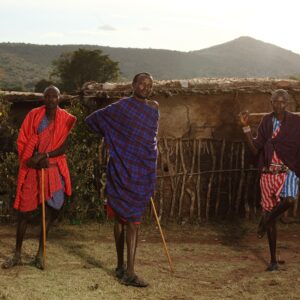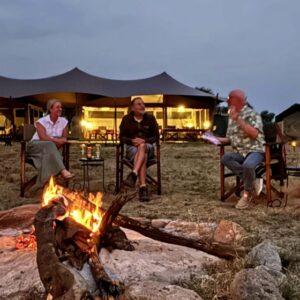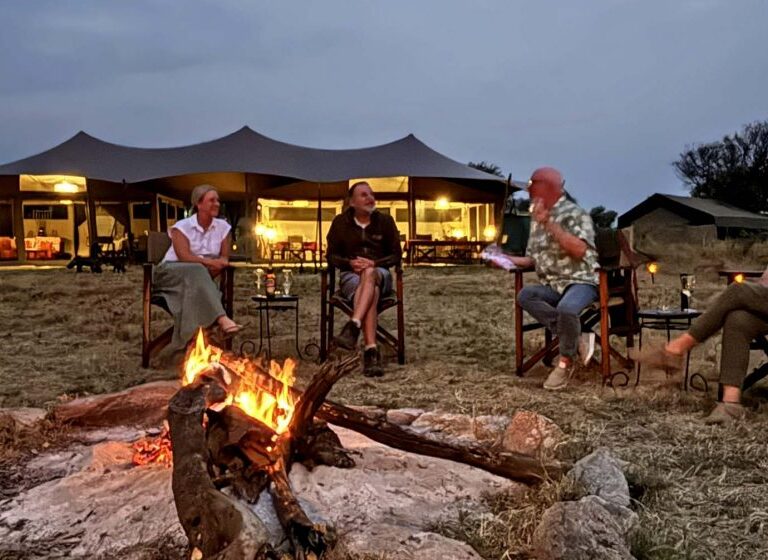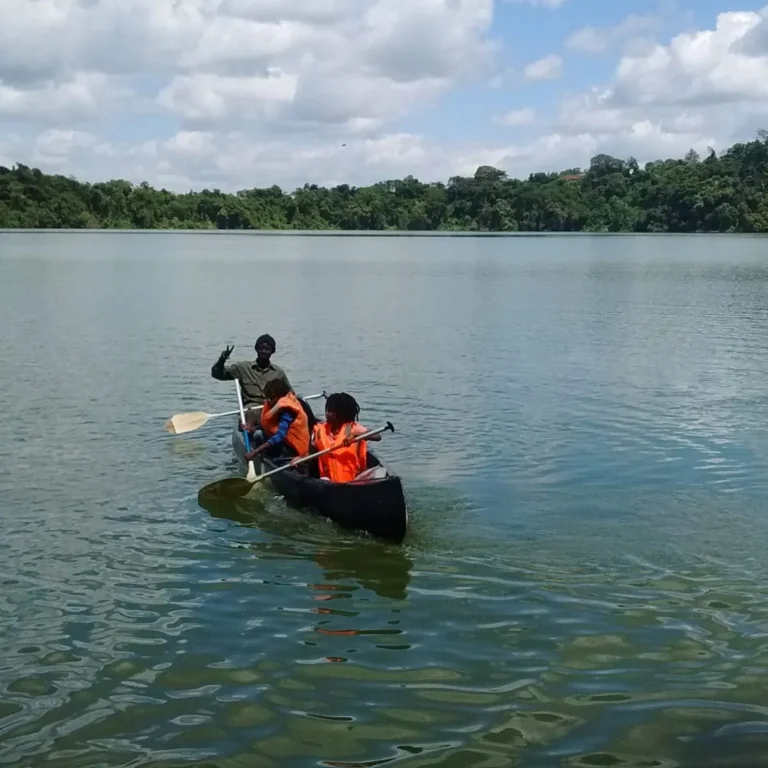When planning to conquer Mount Kilimanjaro, you’ll be inundated with comprehensive gear lists covering everything from waterproof jackets to thermal sleeping bags. These lists are crucial, of course. But seasoned Kilimanjaro climbers often discover a handful of seemingly minor items that aren’t typically on the main gear list, yet prove invaluable for comfort, morale, and overall well-being on the mountain.
While a gear list is essential for climbing Kilimanjaro, there are some often overlooked items that can significantly enhance your experience. These include a good book for downtime, a headlamp with extra batteries, a small first-aid kit, snacks, hand sanitizer, wet wipes, sunscreen, lip balm, and cash for tips. Additionally, a small padlock can secure your belongings, and a plug adaptor is crucial for charging devices in Tanzania. These are the unsung heroes of the climb, the small additions that make a big difference in enduring the challenges and truly enjoying the experience. Here are 10 unique items that often get overlooked but deserve a spot in your Kilimanjaro kit:
1. Camp Shoes
After a long day of hiking in heavy, sturdy boots, the first thing you’ll crave at camp is relief for your feet. A pair of lightweight, comfortable camp shoes is an absolute game-changer. Think Crocs, slip-on sandals, or soft running shoes. They allow your feet to breathe, recover, and escape the confines of your boots, making evenings and mornings much more pleasant. They’re also practical for short walks around camp or trips to the dining tent.
2. Eye Drops
The air on Kilimanjaro gets progressively drier as you ascend, and combined with dust from the trails, your eyes can become irritated, dry, and itchy. Saline eye drops provide instant relief, helping to lubricate your eyes and wash away any irritants. They are a small item that can significantly improve your comfort, especially at higher altitudes.
3. Electrolyte Tablets/Powder
While your guides will encourage constant water intake, plain water alone might not be enough to combat dehydration, especially with increased exertion and altitude. Electrolyte tablets or powder (like Nuun, Liquid IV, or similar sports drinks). Can be added to your water bottle to replenish essential minerals lost through sweat. They help with hydration, combat fatigue, and can even subtly aid in acclimatization, making your water more appealing to drink.
4. Hand Warmers
Summit night is notoriously cold, with temperatures often plunging well below freezing. While good gloves are essential, disposable hand warmers provide an extra layer of defense against the biting cold. Pop them into your gloves or mitts, and even tuck one into your sleeping bag or the top of your boots before bed for a touch of warmth. They can be a psychological and physical lifesaver during the coldest hours.
5. Blister Balm/Tape
You’ll be walking for hours each day, and despite having broken-in boots, friction points can still develop. Blister balm (like Body Glide or Compeed stick) applied proactively to potential hot spots can prevent blisters before they form. If a hot spot does emerge, moleskin or specialized blister tape (such as Leukotape) applied immediately can save your hike. Don’t wait for a full-blown blister; prevention and early intervention are key.
6. Packing Cubes
While not glamorous, packing cubes are organizational marvels. With limited space in your duffel bag (carried by porters) and multiple layers of clothing, packing cubes help compartmentalize your gear. This makes it easier for you or your porters to find items quickly. Keeps your clothes organized and compressed, and protects them from dust or minor spills within your duffel. They streamline the chaotic process of living out of a bag for a week.
7. Deck of Cards/Small Travel Game
Even on an adventure trip, there will be downtime at camp, especially in the afternoons or evenings before dinner. Electricity might be limited, and screen time might be undesirable. A simple deck of cards or a small, lightweight travel game provides a wonderful way to connect with your fellow climbers and guides, share laughs, and pass the time without relying on electronics. It fosters camaraderie and makes the communal tent feel more like a cozy gathering.
8. Noise-Cancelling Headphones/Earplugs
While the sounds of the African night are enchanting, they can also be disruptive. The wind, distant animal calls, or even the sounds of other campers can make it hard to get restorative sleep. Noise-cancelling headphones (for music or podcasts). Or a good pair of earplugs can be invaluable for ensuring you get the rest you need. Which is critical for successful acclimatization and energy levels.
9. Headlamp Diffuser (or a Frosted Ziploc Bag)
Your headlamp is essential for navigating camp after dark and, crucially, for summit night Items for Climbing Kilimanjaro that aren’t on the gear List. However, a direct beam can be harsh and disrupt the natural night vision of others in the tent or around camp. A simple headlamp diffuser (often a silicone cone) or even a frosted Ziploc bag placed over the headlamp can soften the light, making it more ambient and less intrusive. It’s a considerate gesture that improves the shared camp experience.
10. Gratitude Journal
Kilimanjaro is as much a mental journey as it is a physical one Items for Climbing Kilimanjaro that aren’t on the gear List. A small, lightweight journal and pen can be a powerful tool for reflection. Use it to jot down your thoughts, observations, feelings, and moments of awe. Writing about the challenges you face and the beauty you witness. Especially during moments of discomfort, can serve as a profound reminder of your strength and the incredible experience you’re having. Reading it back after the climb provides a deeper appreciation for your accomplishment.
These often-overlooked items, while seemingly minor, contribute significantly to your comfort Items for Climbing Kilimanjaro that aren’t on the gear List. Well-being, and overall enjoyment of the Kilimanjaro climb. They transform the experience from a mere physical challenge into a more comfortable, organized, and deeply reflective adventure.
Add-on Items For Climbing Kilimanjaro that aren’t on the Gear List:
Book/Games. Evenings on the mountain offer downtime for relaxation. Pack a book, a deck of cards, or a small game to unwind.
Headlamp with Extra Batteries. A headlamp is crucial for navigating in the dark, especially during summit night. Spare batteries are a must.
Small First-Aid Kit. While guides carry a larger kit, a personal kit with pain relievers, blister treatment, and any personal medications can be a lifesaver.
Snacks. High-calorie, lightweight snacks like energy bars, nuts, or dried fruit can provide a boost during the climb and are particularly useful on summit night.
Hand Sanitizer. Hygiene is important at higher altitudes. Hand sanitizer will help keep you healthy.
Wet Wipes. These are useful for quick clean-ups, especially when access to water is limited.
Sunscreen and Lip Balm. The sun’s intensity increases with altitude. Protect your skin and lips from sunburn.
Cash for Tips. It’s customary to tip your guides, porters, and cooks at the end of the climb. Having small denominations of Tanzanian shillings on hand is helpful.
Padlock. While your gear will be stored in tents, a small padlock can provide extra security for your belongings.
Plug Adaptor. Tanzania uses type G plugs. Make sure you have the correct adaptor to charge your electronic devices.
Items for Climbing Kilimanjaro That Aren’t on the Gear List FAQs
Why are “camp shoes” so important on Kilimanjaro? Your hiking boots are heavy and supportive, but can become uncomfortable after long days of trekking. Camp shoes (like Crocs or sandals) allow your feet to breathe, recover, and prevent swelling, greatly improving comfort around camp and aiding overall foot health.
Do I need electrolyte tablets if I’m drinking a lot of water? While crucial, plain water alone might not be enough at high altitudes and during sustained exertion. Electrolyte tablets help replenish essential salts and minerals lost through sweat, improving hydration, reducing fatigue, and potentially aiding acclimatization by making water more appealing.
Are hand warmers necessary if I have good gloves? Good gloves are a must, but hand warmers provide an extra layer of warmth, especially during the extremely cold summit night. They can be placed inside gloves, boots, or even your sleeping bag for additional comfort and to prevent cold-related discomfort.
How do packing cubes help on Kilimanjaro? Packing cubes organize your clothing and gear within your duffel bag (carried by porters), making items easier to find. They compress clothes, protect them from dust, and keep your bag tidy, which is very helpful when living out of a duffel for a week in changing conditions.
Why bring a deck of cards or a small game? There’s often downtime at camp in the afternoons and evenings. A small game provides entertainment, encourages interaction with your fellow climbers and guides, and helps pass the time without relying on electronic devices, fostering camaraderie.
What’s the benefit of noise-cancelling headphones or earplugs? Restorative sleep is vital for acclimatization. Noise-cancelling headphones or earplugs can block out disruptive sounds like wind, distant animal calls, or fellow campers, helping you get the necessary rest in a tented environment.
How does a headlamp diffuser work? A headlamp diffuser (or a frosted plastic bag) softens the harsh, direct beam of a headlamp into a wider, more ambient light. This is considered in shared tents and around camp, as it avoids dazzling others and helps maintain night vision.
Why is a “gratitude journal” suggested for the climb? Kilimanjaro is a challenging experience, both physically and mentally. A gratitude journal allows you to reflect on the daily beauty, express appreciation for moments and people, and process the difficulties. Writing can be therapeutic and helps reinforce the positive aspects of the journey, contributing to mental resilience.
Do I Need All That Gear to Climb Kilimanjaro? While most clothing, gear, and equipment can be replaced in Tanzania before your climb, there are some things that you should not replace. We recommend that you wear one complete hiking outfit on the plane, including a long-sleeved shirt, hiking pants, underwear, socks, and hiking boots.
Can you carry your gear up Kilimanjaro? Before you set out on your climb, you’ll be able to leave your non-climbing clothing, gear, and toiletries behind at a hotel or guide company office. While climbing Kilimanjaro, you will typically carry the gear you need for trekking from one camp to the next in a medium-sized daypack (approximately 25–35 liters).
Do you need climbing gear for Kilimanjaro? What do you need to climb Kilimanjaro? Your Kilimanjaro gear list should include layered clothing (including an insulated jacket and warm gloves), good quality hiking boots, a 4-season bag, a headlamp, and a water bottle.
Do you bring your tent to Kilimanjaro? You need to be prepared for all Kilimanjaro weather conditions: sunny, windy, and rainy. We provide tents, the camp equipment, food, cooking facilities, and other shared items. You’ll have a duffel bag with all your kit, carried by the porters, and carry your daypack during the trekking day.
What Gear Do I Need to Climb Kilimanjaro? In your daypack, take water, sunglasses, a camera, binoculars, rain pants, and a jacket as a minimum. Add any other items you might need during the day because you won’t have access to your main luggage until the end of your trek for the day. What do you need to bring to climb Mount Kilimanjaro? Bring extra sets of batteries as cold weather shortens their life.
What equipment do you need for Kilimanjaro? Trekking Poles. Collapsible skiing/trekking poles.
Wool or Synthetic Socks. Four or five pairs of midweight to heavyweight hiking socks.
Gaiters. Waterproof gaiters sized to fit your boots snugly.
Hiking Boots.
Short Underwear.
Synthetic T-shirt
Baselayer Bottom
Heavy Baselayer Bottoms








